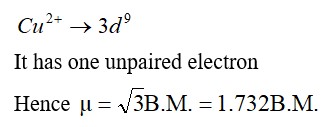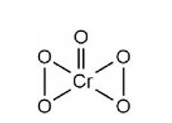Match items of List-I with those of List-II:
List-I List-II
(Property) (Example)
(A) Diamagnetism (i) MnO
(B) Ferrimagnetism (ii) O2
(C) Paramagnetism (iii) NaCl
(D) Antiferromagnetism (iv) Fe3O4
Choose the most appropriate answer from the options given below:
Match items of List-I with those of List-II:
List-I List-II
(Property) (Example)
(A) Diamagnetism (i) MnO
(B) Ferrimagnetism (ii) O2
(C) Paramagnetism (iii) NaCl
(D) Antiferromagnetism (iv) Fe3O4
Choose the most appropriate answer from the options given below:
Option 1 -
(A)-(ii), (B)-(i), (C)-(iii), (D)-(iv)
Option 2 -
(A)-(iv), (B)-(ii), (C)-(i), (D)-(iii)
Option 3 -
(A)-(i), (B)-(iii), (C)-(iv), (D)-(ii)
Option 4 -
(A)-(iii), (B)-(iv), (C)-(ii), (D)-(i)
-
1 Answer
-
Correct Option - 4
Detailed Solution:MnO -> Antiferromagnetism
O2 -> Paramagnetism
NaCl -> Diamagnetism
Fe3O4 -> Ferrimagnetism
Similar Questions for you
K2Cr2O7 + H2O2 + H2SO4->
Potassium permanganate in alkaline medium oxidise lodide to lodate.
Compound A is
KMnO4 decomposes upon heating at 513 K and forms K2MnO4 and MnO2.
2KMnO4
The colour changes due to change in pH not due to its reaction with water.
Taking an Exam? Selecting a College?
Get authentic answers from experts, students and alumni that you won't find anywhere else
Sign Up on ShikshaOn Shiksha, get access to
- 65k Colleges
- 1.2k Exams
- 688k Reviews
- 1800k Answers


